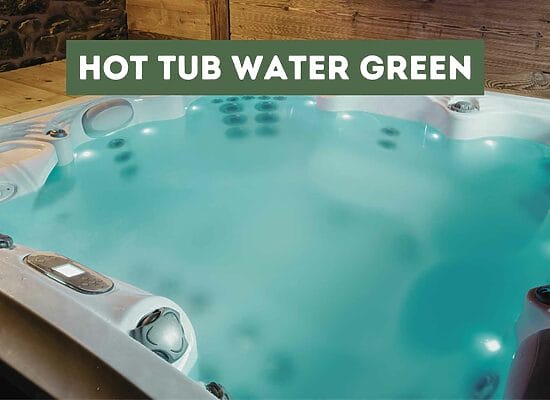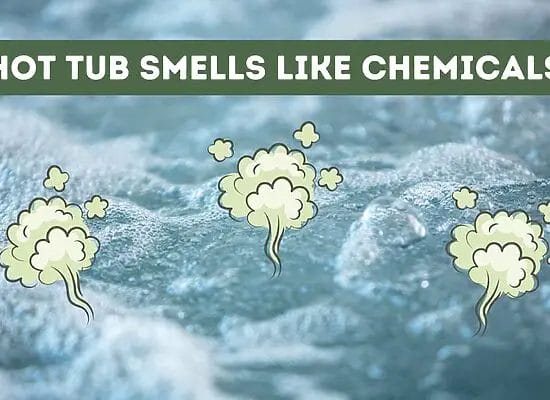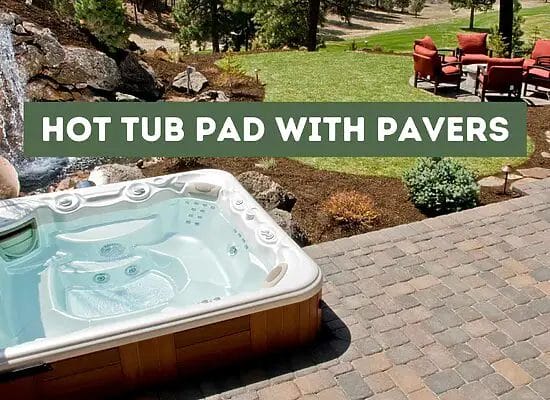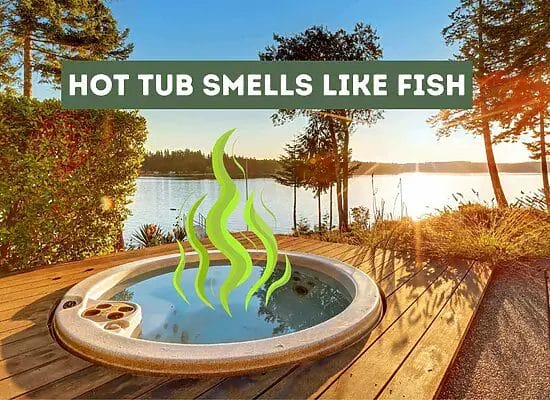
If you own a hot tub, you know how relaxing and enjoyable it can be to soak in the warm water. However, if you’re not careful, your hot tub can become a breeding ground for harmful bacteria and mold. One type of mold that can grow in hot tubs is known as white water mold.
White water mold is a type of fungus that can grow in moist environments, such as hot tubs. It’s called white water mold because it often appears as a white, fuzzy substance on the surface of the water. While it may not be harmful to humans, it can cause a number of problems with your hot tub, including clogged filters and reduced water flow.
If left unchecked, white water mold can also cause a foul odor in your hot tub and discoloration of the water. To prevent the growth of white water mold, it’s important to maintain proper hot tub hygiene. This includes regularly cleaning and sanitizing your hot tub, as well as ensuring that the water chemistry is properly balanced. With a little bit of effort, you can keep your hot tub free of white water mold and enjoy a clean and relaxing soak every time.
Key takeaways:
- White Water Mold Overview: White water mold is a type of fungus that can grow in moist environments, such as hot tubs. It often appears as a white, fuzzy substance on the water’s surface, leading to issues like clogged filters and reduced water flow.
- Differences from Regular Mold: While white water mold isn’t as harmful as regular mold, it can still cause problems like skin irritation and foul odors. Unlike regular mold, it primarily affects the hot tub environment rather than posing a significant health risk to humans.
- Causes of Growth: Several factors contribute to white water mold growth. These include improper water quality, chemical imbalance (too low or high chlorine/bromine levels), and inadequate maintenance practices like infrequent cleaning and filter replacement.
- Identifying White Water Mold: Signs of white water mold include cloudy water, slimy surfaces, and an unpleasant odor. Early identification is crucial to prevent the mold from becoming a larger problem and potentially damaging the hot tub.
- Prevention Strategies: Proper hot tub hygiene is essential to prevent white water mold. Regular cleaning, sanitizing, and maintaining balanced water chemistry (pH, chlorine levels) are key to inhibiting mold growth. Using specialized chemicals and shock treatments can also help.
- Effective Cleaning Methods: To combat white water mold, effective cleaning methods include draining and refilling the tub periodically to remove stagnant water, cleaning and disinfecting hot tub filters, and maintaining proper sanitization using chlorine or bromine.
- Water Chemistry Management: Regular testing and adjustment of water chemistry components like pH, chlorine/bromine levels, total alkalinity, and calcium hardness are necessary to keep the water clean, safe, and free from mold growth.
Understanding White Water Mold
If you own a hot tub, it’s important to be aware of white water mold. This type of mold is a common problem in hot tubs and can cause serious health issues if left untreated.
White water mold is a type of fungus that thrives in warm, wet environments like hot tubs. It can appear as a white or gray film on the surface of the water or on the walls of the hot tub. It can also cause a musty odor and cloudy water.
One of the most important things to understand about white water mold is that it is not the same as regular mold. Regular mold can be harmful to your health and can cause serious respiratory problems. While white water mold is not as dangerous, it can still cause skin irritation and other health issues if left untreated.
To prevent white water mold from growing in your hot tub, it’s important to maintain proper water chemistry and cleanliness. This includes regularly testing the pH and chlorine levels, as well as regularly cleaning the hot tub and its filters.
If you do notice white water mold in your hot tub, it’s important to take action immediately. This may include draining and cleaning the hot tub, as well as using specialized chemicals to kill the mold.
Causes of White Water Mold in Hot Tubs
If you own a hot tub, you probably know the importance of keeping it clean and well-maintained. One of the most common problems hot tub owners face is white water mold. This type of mold can be unsightly and even harmful to your health if left untreated. In this section, we will explore the causes of white water mold in hot tubs.
Water Quality
The quality of the water in your hot tub is one of the biggest factors that can contribute to the growth of white water mold. If the water is not properly balanced, it can create an environment that is conducive to mold growth. Specifically, if the pH level is too high or too low, it can create an environment that is ideal for mold growth. In addition, if the alkalinity or total alkalinity levels are not balanced, it can also contribute to the growth of mold.
Chemical Imbalance
Another factor that can contribute to the growth of white water mold in hot tubs is a chemical imbalance. Specifically, if the chlorine or bromine levels are too low, it can create an environment that is ideal for mold growth. On the other hand, if the levels are too high, it can create an environment that is too harsh for the hot tub’s components and can damage them.
Improper Maintenance
Finally, improper maintenance can also contribute to the growth of white water mold in hot tubs. Specifically, if the hot tub is not cleaned regularly or if the filters are not changed on a regular basis, it can create an environment that is ideal for mold growth. In addition, if the hot tub cover is not properly secured, it can allow moisture to enter the hot tub, which can also contribute to the growth of mold.
Identifying White Water Mold
White water mold is a type of fungus that can grow in hot tubs and cause a mold problem. It is often found in the water lines and equipment of hot tubs, where it can create a biofilm that provides a breeding ground for bacteria. If left untreated, it can cause health problems and damage to your hot tub.
There are several ways to identify white water mold in your hot tub:
- Cloudy water: White water mold can cause your hot tub water to become cloudy or murky. This is because the fungus can grow and spread throughout the water.
- Slimy surfaces: If you notice a slimy film on the surface of your hot tub or on the walls of the water lines, it may be a sign of white water mold. This film is often caused by the biofilm that the fungus creates.
- Unpleasant odor: White water mold can create a musty or unpleasant odor in your hot tub. This is because the fungus releases volatile organic compounds (VOCs) as it grows.
If you suspect that you have white water mold in your hot tub, it is important to take action right away. The longer you wait, the more difficult it will be to get rid of the mold.
One way to prevent white water mold is to keep your hot tub clean and well-maintained. This includes regularly cleaning the water lines and equipment, as well as using a sanitizer to kill bacteria and other microorganisms.
Another way to prevent white water mold is to use a hot tub shock treatment. This involves adding a large amount of sanitizer to the water to kill off any bacteria or other microorganisms that may be present.
Prevention of White Water Mold
To prevent white water mold in your hot tub, it is important to follow proper cleaning, regular maintenance, and water chemistry management. By taking these steps, you can ensure that your hot tub stays clean and free from harmful bacteria.
Proper Cleaning
One of the most important steps in preventing white water mold is to properly clean your hot tub. This includes draining and cleaning the tub at least every three months or more often if it is used frequently. When cleaning the tub, be sure to use a non-abrasive cleaner and a soft cloth or sponge to avoid damaging the surface.
Regular Maintenance
Regular ongoing maintenance is also key to preventing white water mold. This includes checking and adjusting the pH and chlorine levels of the water regularly, as well as cleaning the filter and replacing it as needed. It is also important to keep the water circulating to prevent stagnant areas where bacteria can grow.
Water Chemistry Management
Proper water chemistry management is essential to preventing white water mold. This includes maintaining a balanced pH level between 7.2 and 7.8, as well as a chlorine level between 3 and 5 parts per million (ppm). You can also use a shock treatment to help eliminate any bacteria that may be present in the water.
Pro Tip: To keep your hot tub free from white water mold, consider using a natural enzyme product to break down organic matter and prevent the growth of bacteria.
Effective Cleaning Methods
When it comes to dealing with hot tub white water mold, cleaning is essential. Here are some effective cleaning methods that you can use to get rid of the mold and keep your hot tub clean and safe.
Draining and Refilling
One of the most effective ways to clean your hot tub is to drain and refill it. This will remove any stagnant water that may be contributing to the growth of mold. Before draining the hot tub, make sure to turn off the power and unplug it from the outlet. Then, use a hose to drain the water out of the tub. Once the tub is empty, use a gentle cleanser to clean the surface of the tub. Rinse the tub thoroughly with water and then refill it with fresh water.
Filter Cleaning
Hot tub filters play a crucial role in keeping the water clean and free of contaminants. However, they can also be a breeding ground for mold and bacteria. To prevent this, it’s essential to clean your hot tub filters regularly. Remove the filters from the hot tub and rinse them with a hose to remove any debris. Then, soak the filters in a hot tub cleaner or a non-chlorine shock solution to disinfect them. Rinse the filters thoroughly with water and then reinstall them in the hot tub.
Sanitization
Sanitization is another critical aspect of hot tub maintenance. Sanitization chemicals such as chlorine or bromine can help kill bacteria and prevent the growth of mold. However, it’s essential to use these chemicals in the right amount. Too much can cause skin irritation, while too little can be ineffective. Follow the manufacturer’s instructions and test the water regularly to ensure that the chemical levels are balanced.
Pro Tip: To prevent the growth of mold in your hot tub, it's essential to keep the water clean and well-maintained. Regular cleaning, filter maintenance, and proper sanitization can go a long way in keeping your hot tub safe and enjoyable.
Testing and Adjusting Water Chemistry
To maintain a clean and healthy hot tub, it is essential to regularly test and adjust the water chemistry. Proper water chemistry ensures that the water is free of harmful bacteria and other contaminants while also preventing damage to the hot tub and its components.
Testing the Water
The first step in maintaining proper water chemistry is to test the water regularly. You should test the water at least once a week and more frequently if the hot tub is heavily used. There are several different tests you can perform, including pH, chlorine or bromine levels, total alkalinity, and calcium hardness.
To test the pH level, use a test strip or liquid test kit. The ideal pH range for hot tub water is between 7.2 and 7.8. If the pH is too low, add a pH increaser. If the pH is too high, add a pH decreaser.
To test the chlorine or bromine levels, use a test strip or liquid test kit. The ideal range for chlorine is between 3 and 5 parts per million (ppm), while the ideal range for bromine is between 4 and 6 ppm. If the levels are too low, add more sanitizer. If the levels are too high, dilute the water with fresh water.
Adjusting the Water Chemistry
Once you have tested the water, you may need to adjust the water chemistry to bring it back into balance. Here are some tips for adjusting the water chemistry:
- To balance pH levels, use a pH increaser like sodium carbonate or baking soda if it’s too low. If it’s too high, opt for a pH decreaser such as sodium bisulfate or muriatic acid.
- If the chlorine or bromine levels are too low, add more sanitizer. If the levels are too high, dilute the water with fresh water.
- If the total alkalinity is too low, add an alkalinity increaser, such as sodium bicarbonate. If the total alkalinity is too high, add an alkalinity decreaser, such as muriatic acid.
- If the calcium hardness is too low, add a calcium hardness increaser, such as calcium chloride. If the calcium hardness is too high, dilute the water with fresh water.
Additional Tips and Considerations
To prevent white water mold from growing in your hot tub, there are a few additional tips and considerations to keep in mind.
First, make sure to properly maintain your hot tub cover. Clean it regularly and keep it dry to prevent mold growth. Additionally, consider investing in a cover lift to make removing and replacing the cover easier and less likely to damage the cover.
It’s also important to properly maintain your hot tub equipment, including the filtration system. Regularly clean and replace filters as needed to ensure proper water circulation and prevent the growth of mold and bacteria.
When using your hot tub, make sure to shower before entering to rinse off any personal care products that can contribute to mold growth. After use, use a vacuum or drain the water to remove any debris or dirt that can also contribute to mold growth.
Consider using a dehumidifier in the room where your hot tub is located to help reduce moisture levels in the air and prevent mold growth. Additionally, allowing sunlight to shine on your hot tub can help kill bacteria and mold spores.
Finally, make sure to properly maintain your hot tub’s water chemistry. Test the water regularly and adjust as needed to ensure proper pH and sanitizer levels. This will help prevent white water mold and other bacteria from growing in your hot tub.
FAQ: Hot Tub White Water Mold
Is white mold in a hot tub harmful?
White mold in hot tubs is usually not harmful to humans. However, it can cause skin irritation and allergic reactions. If you have a weak immune system, you should avoid using a hot tub with white mold.
Can you use a hot tub with white water mold?
It is not recommended to use a hot tub with white water mold. The mold can spread and cause health problems. You should drain and clean your hot tub before using it again.
What causes white mold in hot tubs?
White mold in hot tubs is caused by a combination of factors, including poor water chemistry, high pH levels, and inadequate cleaning and maintenance. Bacteria and algae can also contribute to the growth of white mold.
How to get rid of white flakes in the hot tub?
To get rid of white flakes in your hot tub, you should first drain and clean the hot tub. Use a hot tub cleaner that is specifically designed to remove white flakes and mold. You should also adjust the water chemistry to prevent the growth of mold in the future.
What causes white water Mould in the hot tub?
White water mold in hot tubs is caused by a combination of factors, including poor water chemistry, high pH levels, and inadequate cleaning and maintenance. Bacteria and algae can also contribute to the growth of white water mold.
How do you get rid of white water mold in a hot tub?
To get rid of white water mold in your hot tub, you should first drain and clean the hot tub. Use a hot tub cleaner that is specifically designed to remove white water mold. You should also adjust the water chemistry to prevent the growth of mold in the future. Regular cleaning and maintenance can also help prevent the growth of white water mold.












